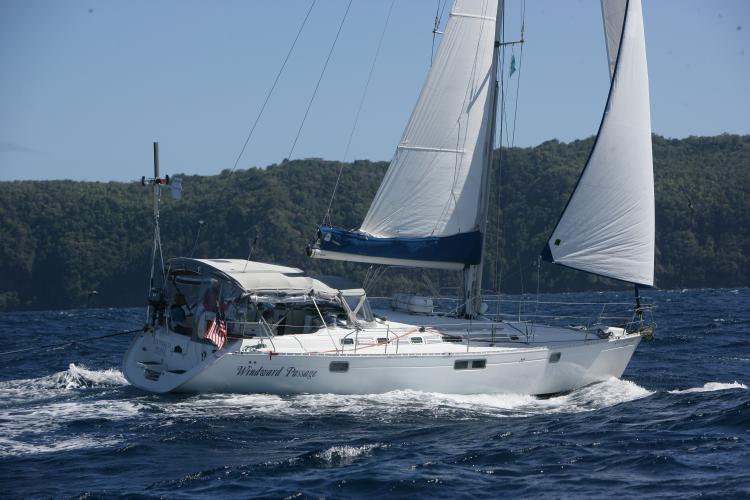A System for Remembering Who’s “Give Way” and “Stand On” Vessel While Boating
This is a question one hears frequently when sailing and boating in crowded conditions. The answer is: No One Has the Right of Way! The Navigation Rules – International and Inland are published by the Department of Homeland Security and are enforced in US waters by the Coast Guard and local marine police. They were produced in 1972 by a Convention on International Regulations for Preventing Collisions at Sea (COLREGS), 1972. Nowhere in the rules will you find the term “right-of-way vessel.” Instead, whenever the rules are addressing a specific situation involving two vessels where collision is possible the vessels are described as “the vessel required to keep out of the way of the other vessel” and “the other vessel.”
These terms are then defined in Rule 16 and 17 as the “Give Way Vessel” and the “Stand On Vessel” respectively. To emphasize that even the stand on vessel is sometimes required to take action to do everything they can to avoid a collision, Rule 17b states “When, from any cause, the vessel required to keep her course and speed finds herself so close that collision cannot be avoided by the action of the give-way vessel alone, she shall take such action as will best aid to avoid collision” (emphasis added). A lawyer will tell you that when you see “shall,” it’s mandatory.
How do the rules define who is the stand on vessel and who is the give way vessel? Twenty years ago when I was taking a course to prepare me to take the Masters Exam, the instructor introduced a memory aid that helped me remember the rules in the eight most frequently encountered situations: “Only New Reels Catch Fish So Purchase Some.” I’ll give a short version of the meaning of the rules, but there are more elaborate definitions of the terms in the COLREGS Navigation Rules with which you should be familiar. View the listing below as any vessel down the list is a give way vessel to any vessel above on the list.
O – Overtaking: A vessel overtaking another vessel is always the give way vessel. Thus, if a sailboat is overtaking a powerboat, the sailboat is the give way vessel.
N – Not Under Command: A vessel that, due to some exceptional circumstance, is not able to maneuver according to these rules (example: lost their ability to steer).
R – Restricted Ability To Maneuver: Because of the work it is engaged in, a vessel is restricted in its ability to maneuver (example: a vessel laying cable or tending to buoys).
C – Constrained by Draft: This rule only applies in international waters (Rule 18d) and requires special signals (Rule 28).
F – Fishing: The definition here is important: the term “vessel engaged in fishing” means any vessel fishing with nets, lines, trawls, or other fishing apparatus which restricts maneuverability, but does not include a vessel fishing with trolling lines or other fishing apparatus which do not restrict maneuverability.
S – Sailing Vessel: Again, the definition is important: The term “sailing vessel” means any vessel under sail provided that propelling machinery, if fitted, is not being used.
P – Power vessel: The term “power-driven vessel” means any vessel propelled by machinery.
S – Seaplane: We don’t run into this situation often but a seaplane on the water is the give way vessel to everything above.
Using this memory aid, I was able to answer about 85 percent of the questions regarding who must give way when two vessels meet. There are some additional rules that are important when two sailing vessels meet and they are given in Rule 12
(a) When two sailing vessels are approaching one another, so as to involve risk of collision, one of them shall keep out of the way of the other as follows:
(i) When each has the wind on a different side, the vessel which has the wind on the port side shall keep out of the way of the other
(ii) When both have the wind on the same side, the vessel which is to windward shall keep out of the way of the vessel which is to leeward
(iii) If a vessel with the wind on the port side sees a vessel to windward and cannot determine with certainty whether the other vessel has the wind on the port or on the starboard side, she shall keep out of the way of the other.
(b) For the purpose of this rule the windward side shall be deemed to be the side opposite to that on which the mainsail is carried, or in the case of a square-rigged vessel, the side opposite to that on which the largest fore and-aft sail is carried.
Remember, the rules are written to prevent collisions at sea. Knowing them is the first step in making boating safer for all of us. Find the complete COLREGS Navigation Rules online at navcen.uscg.gov/pdf/navrules/navrules.pdf.
BY RANDY WILLIAMSON





